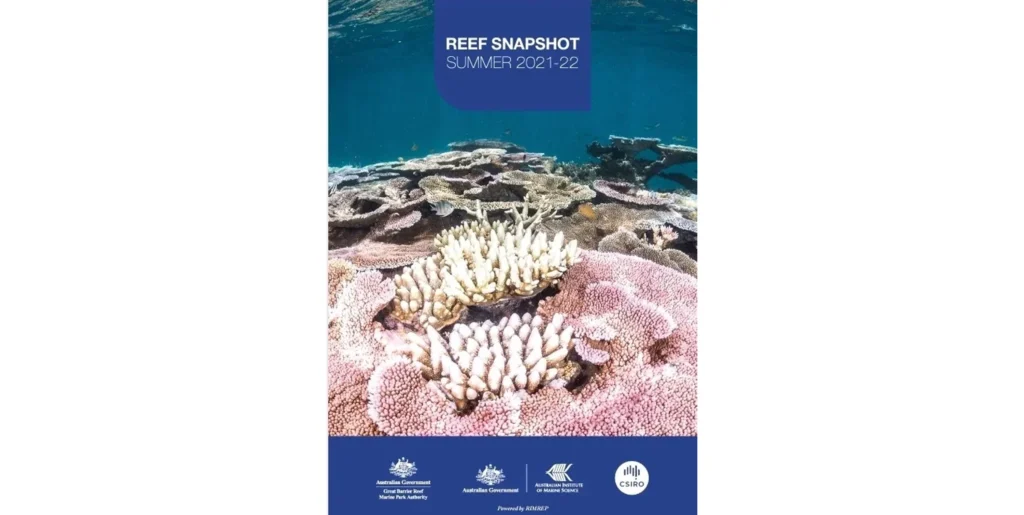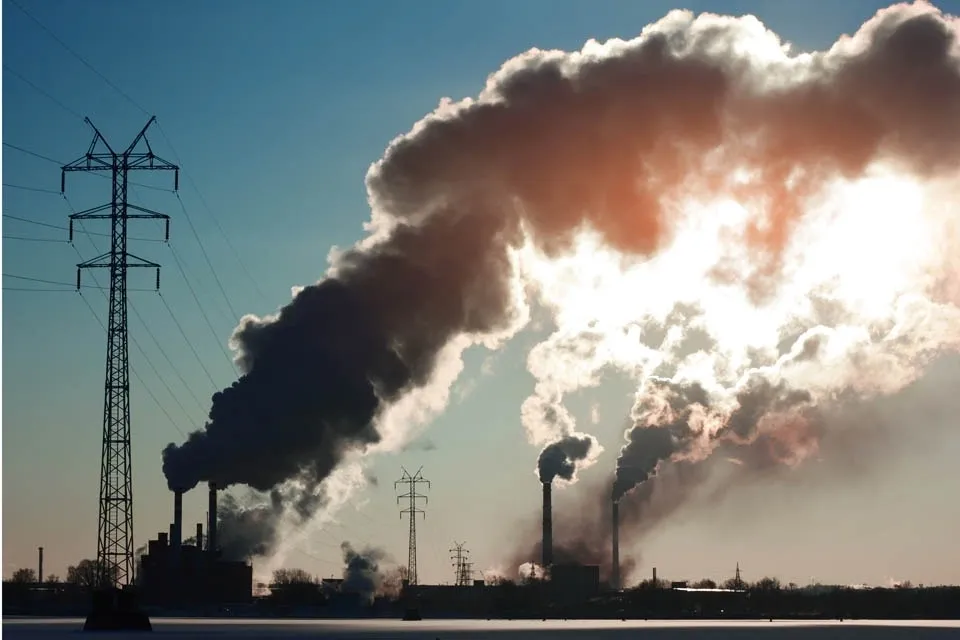
The Great Barrier Reef Marine Park Authority’s ‘Reef Summer Snapshot 2021-22’ found that 90 per cent of surveyed areas bleached in a marine heatwave earlier this year.
According to the Australian Marine Conservation Society (AMCS) this devastation shows “an emergency response to slash emissions must be an urgent priority for the next Australian government”.
The AMCS has called for both major parties to drastically increase their 2030 emissions reductions targets in response to this latest mass bleaching event, the fourth since 2016 and the first in a La Nina year, which is usually characterised by cooler, cloudier conditions.
AMCS Great Barrier Reef campaign manager Dr Lissa Schindler said the annual snapshot containing the bleaching map was devastating news for anyone who loved the Reef.
“This was a La Nina year, normally characterised by more cloud cover and rain.
“It should have been a welcome reprieve for our Reef to help it recover and yet the snapshot shows more than 90 per cent of the reefs surveyed exhibited some bleaching,” she said.
“Although bleaching is becoming more and more frequent, this is not normal and we should not accept that this is the way things are. We need to break the new norms that are breaking our Reef.
“Although the ALP has a better emissions reduction target than the Coalition, both major political parties need to face up to the fact that their climate goals are not enough for the Reef.
“They are not enough for the 64,000 people working in Reef tourism and connected industries, not for the millions from around the world who have visited or want to visit the Reef.
“This is an Australian icon that we must do everything within our power to protect.
“By taking the action required and embracing the huge opportunities of the renewable energy revolution in Australia, we can help protect tens of thousands of Reef jobs and create thousands more in clean energy.
“So what are we waiting for?”
Dr Schindler added: “This Reef has given Australians so much but now more than ever it needs us as custodians to fight harder for its future.”
The Coalition has committed to emissions reductions of 26-28 per cent by 2030.
Labor has pledged to reduce emissions by 43 per cent by the end of the decade.
Both are aiming for net zero by 2050.
According to climate bodies and scientists these reductions will not be enough to save the great Barrier Reef.
Reductions of 75 per cent by 2030 and net zero by 2035 are required in Australia as part of a global effort to limit warming to 1.5C – a crucial threshold for coral reefs.
The only political party to have committed to these targets is the Greens.
The Snapshot
The annual Reef Summer Snapshot 2021-22 prepared by the Great Barrier Reef Marine Park Authority (GBRMPA) with the Australian Institute of Marine Science (AIMS) and CSIRO shows major, extreme and severe bleaching was recorded throughout the central zone of the World Heritage site.
The document also shows extensive and severe bleaching from Cairns to the Whitsundays, including the popular tourism destinations of Magnetic Island, the Palm Island Group, Fitzroy and Green islands.
Summer is a critical time for the health of coral, according to the Marine Park Authority snapshot report.
Thre snapshot is based on the latest information available at the time of writing. It does not take the place of ongoing rigorous reporting by all agencies. It sets the scene for the more comprehensive reports released later in the year, such as the mid-year Long-term Monitoring Program reports by AIMS and reports from the Marine Monitoring Program managed by the Reef Authority.
According to the report, “Above average water temperatures led to a mass coral bleaching event late in the summer.
“Bleaching was observed over a large spatial area and varied in severity, with some areas being heavily bleached, whilst others showed no signs of bleaching.
“Cyclone Tiffany was the only tropical cyclone that tracked across the Reef. Its potential to cause widespread catastrophic damage to reefs was assessed as low.
“While there was heavy rainfall in some catchments, flood levels in waterways near the Reef were generally not major or sustained.
“Crown-of-thorns starfish remain at outbreak or potential outbreak levels in parts of the northern, central and (particularly) southern regions of the Reef. The Crown-of-thorns Starfish Control Program continues to work in all three regions to cull starfish down to non-outbreak levels.
“Compared to previous summers, cumulative impacts were limited this summer, with one major pressure, a marine heatwave, dominating.
“Reef monitoring before summer showed the Reef was in a ‘recovery window’ with coral cover increasing across all three regions. However, during summer coral bleaching was observed at multiple reefs across all three regions, confirming a mass bleaching event.
“It is important to note that bleached corals are alive, but stressed.
“Low or moderately bleached corals have a higher likelihood of recovering, provided there are minimal impacts in the following years. Severely bleached corals have higher mortality rates.
Climate change the greatest threat
According to the Marine Park Authority, climate change “influences weather patterns and the ocean’s temperature, pH level and currents, as well as intensifying the effects of other threats.
“Climate change is escalating, and the Reef is already experiencing the consequences of this.
“Unfortunately, the events that cause disturbances on the Reef are becoming more frequent, leaving less time for coral recovery.
“An increase of only one degree Celsius above the average maximum sea temperature for four weeks can trigger coral bleaching and potentially death.
“Powerful waves generated during cyclones can seriously damage habitat, particularly coral reefs.
“When large volumes of fresh, muddy water flow from the catchment into the ocean after intense or prolonged rainfall, it is called a flood plume. Flood plumes affect water quality, mainly by reducing clarity due to increased sediments and nutrients within the water. This can affect coral health.
What you can do
The Marine Park Authority recommends the following:
1. See the Reef. Love the Reef. Protect the Reef. The Reef is big, beautiful and diverse and its astounding biodiversity continues to inspire people. Like all reefs around the world, the Reef faces challenges and is under pressure. Actions taken now, big or small, will matter. Regardless of where you live, you can take actions at home and work.
2. Actions include reducing your electricity, recycling, reusing plastics and reducing your emissions when getting around, such as walking or riding instead of driving. These all contribute to a healthy marine environment.
3. “We want you to be inspired by the Reef and tell others how they can help, as together, we can all make a difference. We ultimately want everyone to see the Reef, love the Reef and most importantly, protect the Reef.”
4. Read the snapshot
5. Visit gbrmpa.gov.au for actions you can take to help love the Reef. Understand and follow protection rules for the Reef. Measures like zoning (eg access restrictions), permits, no anchoring areas, and extraction limits protect the Reef for the long-term. Before heading out to the Marine Park, ensure you know your zones by using tools such as the free Eye on the Reef app. By taking a little extra care when anchoring, and using moorings where available, you will help protect this delicate underwater landscape.


